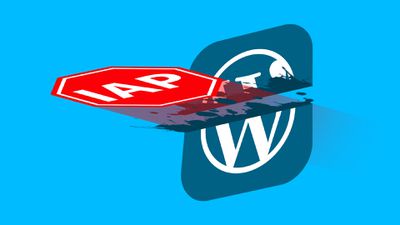Apple is requiring the WordPress for iOS app to implement in-app purchase options for its .com plans, and prevented the app from getting updates until the development team agreed to add the feature, WordPress developer Matt Mullenweg said on Twitter today.

Mullenweg says the WordPress iOS App was "locked" and to push updates and bug fixes, the company had to agree to add support for in-app purchase plans. There was an update released 19 hours ago after three weeks of no updates, so it appears WordPress has committed to introducing Wordpress.com in-app purchase options.
Heads up on why @WordPressiOS updates have been absent... we were locked by App Store. To be able to ship updates and bug fixes again we had to commit to support in-app purchases for .com plans. I know why this is problematic, open to suggestions. Allow others IAP? New name? — Matt Mullenweg (@photomatt) August 21, 2020
WordPress.com offers several paid plans for WordPress.com hosting, priced from $4 per month to $45 per month based on features, storage, support, and other parameters. There are also enterprise options that start at $1,700 per month.
WordPress.com plans allow users to set up a custom domain, access email, build full websites, and more, but it is separate from the WordPress platform. Right now, you can create WordPress.com sites in the app, or add a self-hosted site that uses standard WordPress for management purposes, but there's no option to use the app to set up the WordPress.com paid features in the app.
WordPress is a website platform that is the backbone for many websites on the internet. It's a free, open source tool that anyone can use and customize to meet their needs. WordPress.com, meanwhile, is a separate hosting service with the aforementioned paid plans.
Mullenweg says that the WordPress team isn't sure how to implement support for in-app purchases for the WordPress.com sites given that the WordPress app supports sites built on the WordPress platform. The team is mulling introducing a new name for the app or allowing other hosts and plugins to support in-app purchases for their plans.
New name: The app has always done a ton of work to support WordPresses hosted anywhere, using the XML-RPC API included in core WP since WP 2.6 was released in 2008. That's why we called it "WordPress" and not "https://t.co/lj1vCfp4UL" or "Jetpack." — Matt Mullenweg (@photomatt) August 21, 2020
Allow others IAP: All of the code is open source, if other hosts or plugins wanted to support in-app purchases for their plans we could accept patches and have Automattic pass through the revenue. https://t.co/yJYUG6wQLL — Matt Mullenweg (@photomatt) August 21, 2020
According to Apple's App Store Review Guidelines, apps that offer access to paid digital content or services need to use the in-app purchase system. Apps that operate across several platforms can let users access content, subscriptions, and features that they've paid for outside of the App Store (like on WordPress.com), but Apple's rules say those items must also be available as in-app purchases in the iOS app.
Apple considers WordPress to be a multiplatform service, which means it can offer its content or services purchased through the WordPress.com website in the WordPress app, but an in-app purchase for those services must also be available. The WordPress app and WordPress.com offerings been available for several years now, so it's not clear why Apple didn't previously require WordPress.com in-app purchases to be made available in the app.
Apple told MacRumors that it approved the latest update of the WordPress app and is working with WordPress to bring the app into compliance with the App Store Review Guidelines.
Apple's request that WordPress implement in-app purchases comes as Apple faces scrutiny from antitrust regulators over its App Store purchase policies, and amid a fierce fight with Epic Games over in-app purchase fees.
Update: As it turns out, the WordPress app was in violation of Apple's App Store policies because there were references to upgrading to paid plans within the app's help system that linked to the WordPress plan option on the web, something which was not made clear when reports about the WordPress app being forced to implement in-app purchases came out.
According to Apple, it asked WordPress to add in-app payment options because there was a payments plan section that did not include in-app purchases. Apple and WordPress have now come to an agreement that has seen WordPress remove payment option references from the app, so it is now in compliance with the App Store rules.
Apple in a statement said that the issue with the WordPress app has been resolved:
We believe the issue with the WordPress app has been resolved. Since the developer removed the display of their service payment options from the app, it is now a free stand-alone app and does not have to offer in-app purchases. We have informed the developer and apologize for any confusion that we have caused.























